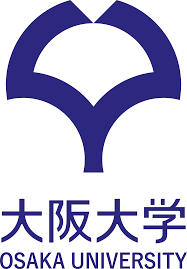Japan
|
|
National Research Institute for Earth Science and Disaster Resilience (NIED)Ibaraki |
| Outline It is a common hope of all human beings to create a safe and peaceful society. Our mission is to protect people's lives from threatening disasters and to develop science and technology in order to realize the society resilient to natural disasters. NIED (National Research Institute for Earth Science and Disaster Resilience) aims to protect people's lives and properties from natural disasters and to prepare society to be resilient to natural disasters, through research on disasters caused by earthquakes, volcanoes, floods, landslides, meteorological changes, snow and ice damages. [detail] --> |
|
 |
Research Institute for Natural Hazards & Disaster Recovery, Niigata UniversityNiigata |
| Outline Established in 2011, by re-organizing twice from the former Research Center on Hazards in Snowy Area originally established in 1978. It has 33 years of history. It has 3 Divisions (Environmental Change Science, Complex Disaster Science, Local Security Science), and 8 Sections. About 60 academic staffs and 3 administrative staffs are involved. • Oriented to the most major research institute covering the Japan Sea coast area. [detail] --> |
|
 |
Research Initiative for Natural Disaster Prevention of Oil and Gas Spill in Industrial Parks
|
| Outline Oil storage tanks in industrial parks were heavily damaged by large scale tsunami, and large-scale oil spills occurred, which led to fire in entire city area, after Great East Japan earthquake on March 11, 2011. Much more larger scale disasters of damages and hazardous materials releases will be estimated in Tokyo Bay, Ise Bay or Osaka Bay if Tokai-Tonankai-Nankai earthquake simultaneously occurs. It is very urgent to perform risk assessment of damages and hazardous materials releases caused by large scale earthquake and tsunami, and take countermeasures to decrease such disasters. This research initiative purposes to perform risk assessment of damages and hazardous materials releases caused by large scale earthquake and tsunami, propose countermeasures to decrease such disasters, and finally make concrete guidelines for them. [detail] --> |
|
 |
Graduate School of Human Sciences
|
| Outline The School of Human Sciences was established in 1972 covering three academic disciplines: psychology, sociology and education. It was the first school or faculty to carry the name 'human sciences' in the country. In 1976 the Graduate School of Human Sciences was created offering Master and Doctoral level programs. Today areas of study include behavioral sciences, psychology, sociology, biological and cultural anthropology, education, philosophy, development studies and area studies. In 2011 the School of Human Sciences launched a new program taught entirely in English. The new program aims to cultivate self-motivated and reflective students with a sophisticated knowledge base and the necessary practical skills to meet the challenges that they will face in our fast-changing, globalized world. The program offers students two majors to choose from Global Citizenship and Contemporary Japan. While offering an English language learning environment in the classroom, students will also be given an opportunity to begin learning or improve their Japanese language skills. |
|
 |
Frontier Research Center for Natural Disaster Mitigation
|
| Outline Ritsumeikan boasts four world-class research institutes which work together to promote education and research at Ritsumeikan University and network with researchers and academic societies all over the world. The history of Ritsumeikan dates back to 1869 when Prince Kinmochi Saionji, an eminent international statesman of modern Japan, founded "Ritsumeikan" as a private academy on the site of the Kyoto Imperial Palace. In 1900, Kojuro Nakagawa, former secretary of Prince Saionji, established Kyoto Hosei School, an evening law school that was open to working people. This school formally adopted the name Ritsumeikan in 1913 and was finally given the status of a university in 1922. |
|
 |
Institute of Disaster Mitigation for Urban Cultural Heritage, Ritsumeikan University (R-DMUCH)Kyoto |
| Outline Institute of Disaster Mitigation for Urban Cultural Heritage, Ritsumeikan University based in Kyoto and Shiga, the rich repository of cultural heritage, has been aiming at establishing a base hub for education and research in "Disaster Mitigation of Cultural Heritage and Historic Cities." This considers preservation of arts and culture and disaster mitigation measures to protect the community that supports culture and arts as a whole. In 2003, the University established the Research Center for Disaster Mitigation of Urban Cultural Heritage to lead research activities where arts and sciences work in cooperation, with substantial external funds such as the 21st Century COE Program and the Global COE Program adopted by Ministry of Education, Culture, Sports, Science and Technology (MEXT). The primary objective of the Center is to protect urban cultural assets from disasters, and establish the necessary knowledge and technology to protect cultural heritage for future generations. Since the UNESCO headquarter authorized the Ritsumeikan University as a UNESCO Chair in 2006, we have implemented an international training program on disaster mitigation for cultural heritage for nine consecutive years up to 2014. This has been taking on the role as an international network hub for the study. |
|
 |
Disaster Prevention Research Center for Island Regions, University of the RyukyusOkinawa |
| Outline Recent increase global warming has elevated the need for preparedness against destructive typhoons and strategicadaptation methods to the rapid rise in sea level, especially in tropical and subtropical regions. Preparedness against huge earthquakes and tsunamis is a matter of great urgency after the Great East Japan Tohoku Earthquake and Tsunami in 2011. The Disaster Prevention Research Center for Island Regions was established as the principal center considering the above factors, and it provides a platform for research on natural disasters in Okinawa Prefecture. The center promotes the multidisciplinary studies on disaster prevention methods for earthquakes, tsunamis, typhoons, landslides and floods. The development of numerical simulations to predict these disasters, wireless communications and satellite distance educations for island regions in emergency is promoted. Moreover, research of a human behavioral domain called the self-help, mutual-help and public-help at the time of a disaster is promoted. [detail] --> |
|
 |
International Research Institute of Disaster Science (IRIDeS), Tohoku UniversitySendai |
| Outline Having experienced the catastrophic disaster in 2011, Tohoku University has founded the International Research Institute of Disaster Science (IRIDeS). Together with collaborating organizations from many countries and with broad areas of specializations, the IRIDeS conducts world-leading research on natural disaster science and disaster mitigation. Based on the lessons from the 2011 Great East Japan (Tohoku) earthquake and tsunami disaster, IRIDeS aims to become a world centre for the study of the disasters and disaster mitigation, learning from and building upon past lessons in disaster management from Japan and around the world. Throughout, the IRIDeS will contribute to on-going recovery/reconstruction efforts in the affected areas, conducting action-oriented research, and pursuing effective disaster management to build sustainable and resilient societies, the IRIDeS innovates the past paradigm of Japan's and world's disaster management to catastrophic natural disasters, hence to become a foundation stone of disaster mitigation management and sciences. Mission of IRIDeSDisaster mitigation management aims to reduce or avoid the potential losses from natural hazards, to assure prompt assistance to victims, to achieve rapid and effective recovery, and to build disaster-resilient and sustainable societies, by five stages of the disaster management cycle; Mitigation, Preparedness, Response, Recovery and Reconstruction. The action-oriented research of the IRIDeS is a pursue of each point in the cycle and integrating and universalizing the scientific discoveries to be dedicated to the world. The IRIDeS creates a new academia of disaster mitigation that subsumes the lessons from the 2011 Tohoku earthquake and tsunami disaster and the findings of the world-leading research into our societies with the aim of establishing the social systems responding promptly, sensibly and effectively to natural disasters, withstanding the adversities with resiliency, passing and exploiting the lessons to the forthcoming disaster management cycles. |
|
Center for Urban Earthquake Engineering (CUEE)
|
|
| Outline There is a great risk (denoted as seismic mega risk) of huge damage by large earthquakes centered underneath major cities of Japan, since vulnerability to natural disasters has been increased due to complicated urban functions that have resulted from excessive concentration of population, economic activities that include infrastructure and other major developments. Not only are the large cities in Japan, but also many other cities in the world are currently (or will be) confronted by the same risk, which constitutes a real threat to the sustainable urban life at global level. Moreover, the recent earthquakes that occurred in Japan have revealed new problems of damage characteristics caused by long period shaking or consequential impacts of functional disorder of critical facilities such as the Kashiwazaki-Kariwa nuclear power plant, which had not been properly taken into account as discovered by the research activities of the "21st century COE (21COE) Program on Evolution of Urban Earthquake Engineering". Such mega-scale damages caused by an earthquake may bring the Japanese economy to ruin as well as impact the world economies at the same time. In order to avoid these catastrophes and build a safe environment for society, advanced research activities on Urban Earthquake Engineering that integrate earthquake-resistant technologies on urban development, regeneration, and reconstruction into a single framework, have to be urgently and strongly encouraged. Further these activities shall include fostering of researchers and academic staff and disaster management engineers who will be able to develop new strategies and practices for implementing appropriate technologies for mitigating these mega-risks in a global field. |
|
 |
Earthquake Research Institute (ERI)
|
| Outline ERI employs over 80 top-notch academics (professors, associate professors and research associates) drawn from diverse fields, ranging from seismology to volcanology, geophysics, geochemistry, geology, geodesy, applied mathematics, information science, civil engineering and seismic engineering. Together with a support staff of 50, 30 visiting researchers and 70 graduate students, we work on advanced researches, technique development, field observations, experiments, theoretical studies, analyses and computer simulations. We promote comprehensive research and education in order to achieve two goals. 1) Scientifically unraveling the various phenomena within the earth and seismic / volcanic activities on our planet, 2) Mitigation of disasters from such phenomena. The ERI is composed of 4 divisions, 5 centers, and other supporting offices and sections. |
|







